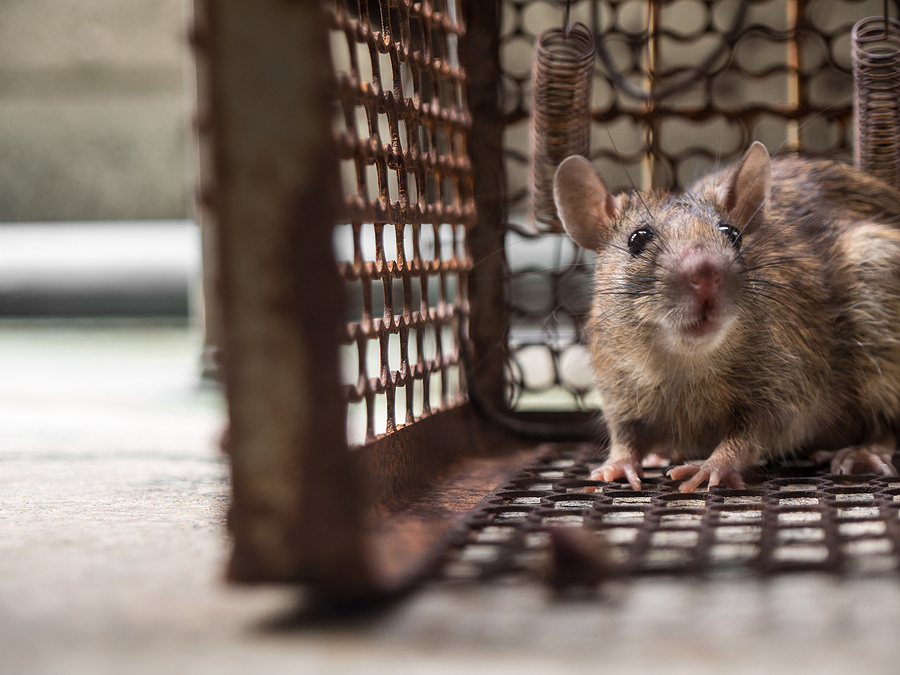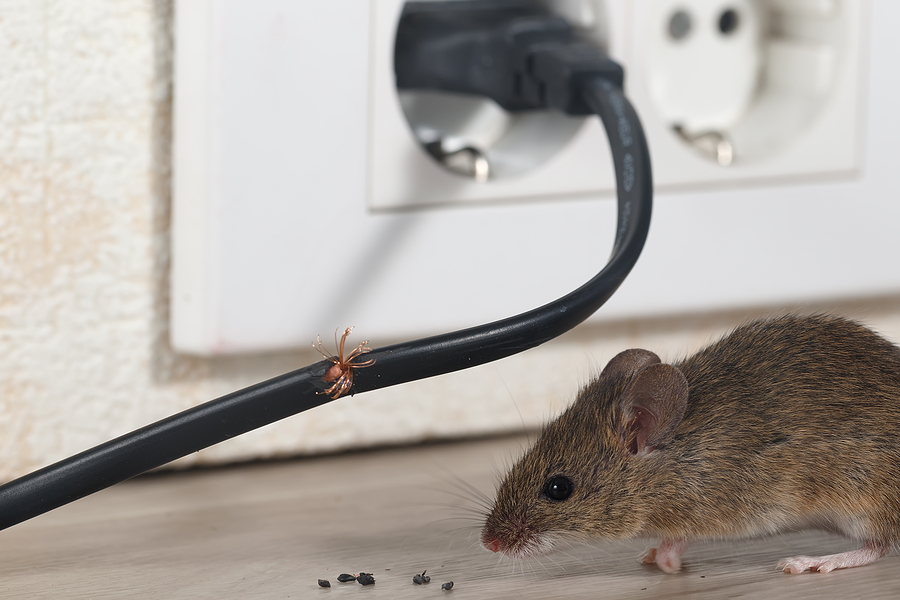Discovering rats in your home can be both alarming and frustrating. These unwelcome guests don’t just create an unpleasant living situation—they pose serious health risks and can cause significant property damage. Rats carry diseases like salmonella and leptospirosis, contaminate food sources, and gnaw through electrical wiring, potentially creating fire hazards.
The good news is that rat infestations are entirely manageable with the right approach. This comprehensive guide will walk you through identifying a rat problem, implementing effective removal methods, and establishing prevention strategies to keep these pests from returning. Taking immediate action is crucial for protecting your home, your health, and your family’s well-being.
Whether you’re dealing with an active infestation or want to prevent future problems, the strategies outlined here will help you regain control of your living space and maintain a rat-free environment.

Identifying a Rat Infestation
Recognizing the early signs of a rat problem allows you to address the issue before it escalates into a full-blown infestation. Rats are nocturnal creatures that prefer to stay hidden, but they leave behind telltale evidence of their presence.
Key Signs of Rat Activity
Droppings are often the first indicator homeowners notice. These small, dark pellets typically appear near food sources, along walls, or in nesting areas. Fresh droppings are soft and dark, while older ones become hard and gray.
Gnawing marks reveal another clear sign of rat activity. Rats must constantly chew to keep their teeth from growing too long, leaving evidence on food packaging, walls, furniture, and electrical wires. Fresh gnaw marks appear light-colored and become darker over time.
Nests made of shredded paper, fabric, or other soft materials indicate rats have established a breeding area. These nests are typically found in secluded, undisturbed locations where rats feel safe.
Sounds provide audible confirmation of rat presence. Scratching, scurrying, or squeaking noises, particularly during nighttime hours, suggest active rat movement within your home.
Common Entry Points and Nesting Areas
Understanding where rats enter and nest helps target your rat control efforts effectively. Rats can squeeze through openings as small as a quarter, making even minor gaps potential entry points.
Entry points commonly include cracks and holes in the foundation, gaps around pipes and wiring, unsealed windows and doors, openings in attics and crawl spaces, gaps in exterior walls, and damaged or poorly sealed vents.
Preferred nesting areas include attics and basements due to their secluded nature, wall cavities and crawl spaces offering protection and warmth, storage areas with cardboard boxes and old fabrics providing nesting materials, spaces behind appliances like refrigerators and stoves for warmth and food access, and areas underneath sinks near water sources.
Safe and Effective Rat Removal Methods
Once you’ve confirmed a rat infestation, several removal methods can help eliminate these pests safely and effectively. The best approach often combines multiple strategies for maximum impact.
Natural Rodent Repellents
Natural rat repellent methods offer a chemical-free approach to rat control, making them ideal for homes with children or pets.
Peppermint oil serves as a powerful natural deterrent. Rats dislike the strong scent, making it an effective repellent. Soak cotton balls in peppermint oil and place them in areas where you’ve noticed rat activity. Replace the cotton balls weekly to maintain effectiveness.
Bay leaves provide another natural option for rat prevention. Place dried bay leaves in pantries, near food storage areas, and along suspected rat pathways. The strong aroma helps deter rats from settling in these locations.
Rat Trapping Methods
Trapping offers one of the most effective ways to remove rats from your home while allowing you to monitor your progress.
Snap traps provide quick and humane rat extermination when used properly. Place these traps along walls where rats typically travel, using peanut butter as bait for its strong scent and sticky consistency. Check traps daily and dispose of caught rats promptly.
Live traps allow for humane rat removal if you prefer not to kill the animals. Bait these traps with food and check them frequently to prevent stress to captured rats. Release trapped rats at least two miles from your property to prevent their return.
When using any rat traps, wear gloves when handling them and follow proper safety protocols for disposal or relocation.
Request a Free Rodent Control Assessment Today! ✏
Professional Rat Pest Control Services
Professional rat exterminator services offer comprehensive solutions that often prove more effective than DIY methods, especially for severe infestations.
Expertise sets professional rat removal services apart. Licensed technicians possess extensive knowledge of rat behavior, breeding patterns, and the most effective removal techniques for different situations.
Comprehensive solutions include integrated pest management strategies that address both immediate removal and long-term rat prevention. Professionals can identify underlying issues that attract rats and develop customized treatment plans.
Safety remains paramount when dealing with rat control products. Licensed technicians use methods and products that are safe for your family and pets while remaining effective against rat populations.
Efficiency saves you time and stress. Professional rat pest control can quickly eliminate infestations that might take weeks or months to resolve using DIY methods alone.
Prevention focus helps professionals identify and address conditions that attract rats, implementing strategies to prevent future rat problems.
Rodent Prevention Strategies
Preventing rodents like rats and mice from entering your home requires a comprehensive approach that eliminates access points, food sources, and attractive nesting conditions.
Sealing Entry Points
Thorough inspection and sealing of potential entry points forms the foundation of effective rat prevention. Inspect your home’s foundation and exterior walls carefully for cracks or holes, no matter how small.
Use caulk for minor gaps, steel wool for medium openings, and metal sheeting for larger holes. Pay special attention to areas where pipes and wires enter the house, as these commonly overlooked spaces provide easy access for rats.
Proper Food Storage and Waste Management
Eliminating food sources significantly reduces your property’s attractiveness to rats.
Food storage requires airtight containers made of glass, metal, or durable plastic. Avoid leaving pet food out overnight, and clean up crumbs and spills promptly. Store bulk items like birdseed and pet food in sealed containers rather than original packaging.
Waste management involves using trash cans with tight-fitting lids and cleaning them regularly to remove food residue. Store garbage containers away from the house when possible, and avoid leaving bags of trash outside for extended periods.
Maintaining a Clean Environment
A clean, well-maintained environment discourages rat activity both inside and outside your home.
Yard maintenance includes keeping your property free of debris such as piles of wood or leaves that provide shelter. Trim bushes and shrubs away from the house to eliminate hiding spots and potential bridges to your roof. Remove standing water sources to prevent rats from establishing nearby colonies.
Interior cleanliness involves regular cleaning of floors, counters, and storage areas. Organize storage spaces to eliminate clutter where rats might nest, and address moisture issues that attract rats to basements and crawl spaces.
Professional Inspections
Regular professional wildlife control inspections help identify vulnerabilities before they become problems. Schedule annual inspections by a qualified pest control service to assess your property’s rat prevention measures. Consider implementing a preventative pest control plan tailored to your specific property and local rat population patterns.
Conclusion
Effective rat control requires combining immediate removal efforts with ongoing prevention strategies. Start by identifying and addressing current rat activity using appropriate trapping methods or natural repellents. Simultaneously, begin sealing entry points and improving food storage practices to prevent new rats from entering your home.
Remember that rat prevention is an ongoing process rather than a one-time solution. Regular maintenance of preventative measures, combined with vigilant monitoring for signs of new activity, helps ensure your home remains rat-free.
For severe infestations or persistent rat problems, professional pest control services provide the expertise and comprehensive solutions necessary for complete elimination and long-term prevention.
Don’t let a Richmond, Virginia rat problem compromise your family’s health and safety. Take action today and schedule a pest control inspection with a licensed professional who can assess your situation and develop an effective treatment
Related Post: Rat Control Strategies: How to Prevent and Eliminate Infestations






